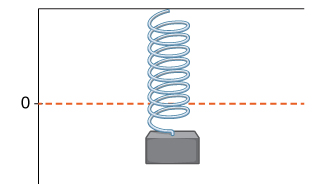| << Chapter < Page | Chapter >> Page > |
As the values of approach the values of approach the value we call the instantaneous velocity at That is, instantaneous velocity at denoted is given by
To better understand the relationship between average velocity and instantaneous velocity, see [link] . In this figure, the slope of the tangent line (shown in red) is the instantaneous velocity of the object at time whose position at time is given by the function The slope of the secant line (shown in green) is the average velocity of the object over the time interval

We can use [link] to calculate the instantaneous velocity, or we can estimate the velocity of a moving object by using a table of values. We can then confirm the estimate by using [link] .
A lead weight on a spring is oscillating up and down. Its position at time with respect to a fixed horizontal line is given by ( [link] ). Use a table of values to estimate Check the estimate by using [link] .

We can estimate the instantaneous velocity at by computing a table of average velocities using values of approaching as shown in [link] .
From the table we see that the average velocity over the time interval is the average velocity over the time interval is and so forth. Using this table of values, it appears that a good estimate is
By using [link] , we can see that
Thus, in fact,
A rock is dropped from a height of feet. Its height above ground at time seconds later is given by Find its instantaneous velocity second after it is dropped, using [link] .
ft/s
As we have seen throughout this section, the slope of a tangent line to a function and instantaneous velocity are related concepts. Each is calculated by computing a derivative and each measures the instantaneous rate of change of a function, or the rate of change of a function at any point along the function.
The instantaneous rate of change of a function at a value is its derivative

Reaching a top speed of mph, the Hennessey Venom GT is one of the fastest cars in the world. In tests it went from to mph in seconds, from mph in seconds, from mph in seconds, and from mph in seconds. Use this data to draw a conclusion about the rate of change of velocity (that is, its acceleration ) as it approaches mph. Does the rate at which the car is accelerating appear to be increasing, decreasing, or constant?
First observe that mph = ft/s, mph ft/s, mph ft/s, and mph ft/s. We can summarize the information in a table.
Now compute the average acceleration of the car in feet per second on intervals of the form as approaches as shown in the following table.
The rate at which the car is accelerating is decreasing as its velocity approaches mph ft/s).

Notification Switch
Would you like to follow the 'Calculus volume 1' conversation and receive update notifications?